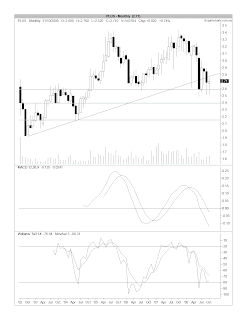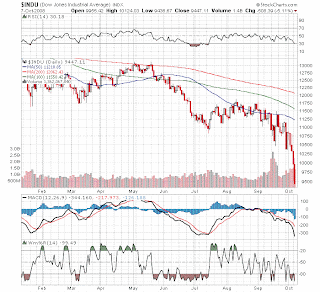Notwithstanding the above comment, I believe that the market could stage a strong rebound from the low recorded on October 28th. That's based on my observation of the steady improvement in the credit market as well as some stability returning to the currency market. While we are not out the wood yet, the stock market should rally after the sharp fall of the past 3-6 months (see Chart 1 below).
To get an indication of how much of a rebound we can expect as well as how treacherous the market may be in the days & weeks ahead, let's look at our stock market during the Asian Financial Crisis in 1998 (see Chart 2 below). The present drop in our market since May this year may have traveled in the same route taken by the market in the earlier period, from June 1997 to October/November 1997. In the earlier period, our stock market rebounded back to its 50-day SMA on a few occasions, while our present market has not only failed to rebound up to its 50-day SMA since May, it has totally failed to put in any decent rebound. With improvement in credit & currency markets & a deeply oversold stock market (akin to a tightly-wound up spring), I believe that the stock market is ripe for a strong rebound. It is likely that our market may rally up to the 50-day SMA, but I believe that the 50-day SMA will also cap the rise in this strong rally in our present market. The 50-day SMA for KLCI is presently at the 1000 mark. Since the KLCI closed at 853.6 yesterday, this means that our KLCI may potentially have an upside of about 17%.

Chart 1: KLCI's daily chart as at October 29, 2008 (source: Tradesignum.com)

Chart 2: KLCI's daily chart from January 30th, 1996 to January 30th, 1999 (source: Tradesignum.com)
In conclusion, I believe that we should take some position in the market presently. While we may not be buying near the bottom, we will be buying at deeply-depressed prices that would lower our potential downside risk & increase our potential upside return. Good luck.





























